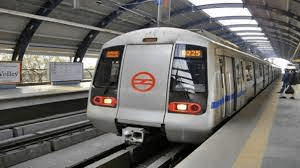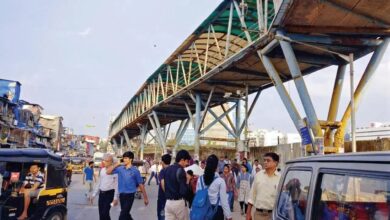Sales of paper tickets with QR codes exceeded 74 lakh, but token sales decreased: DMRC
Following its rollout in early May, Delhi Metro passengers purchased more than 74 lakh QR code-based paper tickets, and since then, the sale of tokens has decreased by more than 30%, according to authorities.
The QR code-based paper ticket system was launched by the Delhi Metro Rail Corporation (DMRC) on May 8 and was marketed as a step towards a “more transparent and human intervention-free mechanism”.

According to authorities, the DMRC plans to progressively phase away the idea of actual tokens.
Any future planning, they added, would take into account the limitations of digital technology and the possibility that not all commuters will have access to cellphones.
According to a senior DMRC official who spoke to PTI, “The total number of QR code-based paper tickets sold up until May 30 is close to 74,00,854.”
After the service’s debut, the urban transporter anticipates that commuters will gradually stop using as many actual tokens. However, many customers who used paper tickets with QR codes have expressed frustration with the technological difficulties they encountered at AFC (automated fare collecting) gates.
There are currently “no technical issues” at the AFC gates, according to a DMRC spokesperson.
“Roughly 50% of AFC gates throughout the network have been upgraded to support QR codes. Token sales have decreased by around 32% since the introduction of paper tickets with QR codes, according to the senior official.
At the moment, passengers have the option to purchase paper tickets with QR codes at metro station counters in addition to tokens. In order to facilitate smooth network travel, the DMRC also distributes smart cards. According to a senior official on May 8, it has updated its AFC gates and customer service counters to accommodate the new QR code-based capability.
The DMRC had said that two AFC gates, one for access and one for departure, had been updated at the time of its debut.
By the end of June, the Delhi Metro hopes to modify its ticket vending machines so that they may dispense paper tickets with QR codes instead of barcodes, according to authorities.
Delhi Metro, which started running in December 2002 on the Red Line with a length of just 8.2 km and six stops, has expanded into a network of 391 km and 286 stations.
Fascinatingly, the rush was so intense the day Atal Bihari Vajpayee, the then-prime minister, opened the first corridor of the Delhi Metro in December 2002 that paper tickets had to be printed to deal with the influx of passengers, many of whom flocked to stations more out of curiosity than a desire to travel.
Along with tokens and smart cards, they were also distributed on December 25, 2002, the first day of passenger operation.
To reduce physical touch while riding in the aftermath of the COVID-19 outbreak, Delhi Metro intended to phase out tokens.
A typical Delhi Metro token features the words “Delhi Metro” in both English and Hindi, along with the company’s emblem, etched on one side, and a picture of the Qutub Minar, along with a number, inscribed on the other. One side of another set of tokens has a picture of a metro train with the words “Delhi Metro” inscribed in both English and Hindi, along with the words “Delhi Metro Rail Corporation,” a number, and its emblem in crimson red.
The manufacturing of these tokens is limited to India, according to a senior DMRC official. However, the purchased chip is a foreign (outsourced) product. A token is created from PVC.
When asked how much it would cost to create a token, he said, “About Rs 16. When compared to the manufacture cost of a token, a paper ticket with a QR code is quite inexpensive.
The DMRC stated in a statement on May 8 that the idea of distributing tokens would be progressively phased out in favour of these more transparent, human intervention-free, cashless systems, allowing for more easy, frictionless, time-saving, and error-free travel.
Within 60 minutes of the time the ticket is issued, passengers will be permitted to use the metro system. The ticket will become worthless after 60 minutes if the user does not use it to access the system, according to the DMRC.







